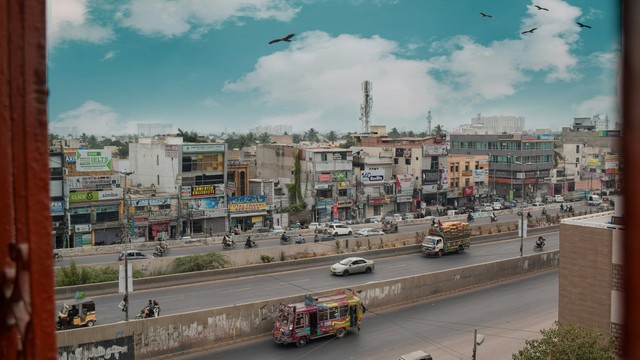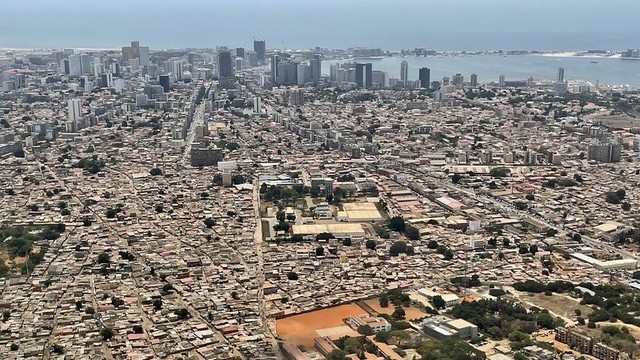How regional and national capital cities influence urban change
David Satterthwaite discusses how building government institutions in capital cities contributes to urban change.


Kolkata lost India's national capital to Delhi in 1931, but it's still among the world’s 25 largest cities. The same case as Rio de Janiero, lost to Brasilia in 1960; Karachi, lost to Islamabad in 1959; and Lagos, lost to Abuja in 1991 (Photo: Masrur Ashraf via Flick, CC BY-ND 2.0)
Cities have always been associated with centres of political power. Most of the world’s 100 largest cities in 2020 are either national capitals or capitals for the next tier of government – state or provincial. Most have been important cities for centuries.
Prospering national and state capitals have been due largely to their key roles in the national and global economy. This blog looks at how urban change is influenced by building the institutions of government in national and regional capitals, providing public services and supporting lower levels of government.
All levels of government have bureaucracies and public service providers, located in the urban centres designated as the (national/regional/local) capital. Their influence on the capital depends not only on their policies and provision of public services but also on the number of public employees, their incomes and their demand for goods and local services.
These can be limited as local governments have very few (mostly low income) employees and lack the power, resources and capacities to meet their responsibilities. But they can have very large roles, especially in national and regional (state, provincial) capitals. The national capital generally houses the employees and bureaucracies of other levels of government (regional and municipal) as well as their own.
Many nations have a substantial proportion of employees (15-40%) in the public sector; in 2013 the OECD nations’ average was 21%. These include those working in public services across the nation (such as schools, healthcare systems, the police) and those concentrated in regional or national capitals. In China in 2003, 33% of employees were in the public sector.
Delhi’s ascent up the ranks of the world’s largest cities is surely powered by the job opportunities in providing goods and services to the various layers of government. In 2011/12, a fifth of Delhi’s workers were in “Public Administration, Education, Health & Others" (PDF).
Many state/provincial governments also have large public sectors because they are so large; in large population nations, states have larger populations than most nations. India’s most populous state, Uttar Pradesh, had 200 million inhabitants in 2011.
Building government
The end of colonial rule drove the rapid growth of Africa’s capital cities. The need for now independent governments triggered the building of institutions of governance that nation-states needed – for instance, national government departments and ministries, judiciaries, police and the armed forces.
The national capitals of now independent nations house the embassies of other nations and the offices of aid agencies, development banks and international NGOs. There was also the demand for goods and services from this new concentration of government institutions, civil servants, politicians and diplomats, as well as other city populations.
This is also generally the case for regional/provincial/state and city and municipal governments. These are often delegated responsibilities for public services – for healthcare and schools, public transport and waste collection, and for infrastructure (piped water, sewers, drains, paved roads, electricity grids, street lighting, telecommunications systems).
Capitals/large cities
Thirty-four of the world’s 100 largest cities in 2020 are national capitals and 46 are state/provincial capitals. So are large cities designated as national or regional capitals? Or is being a regional or national capital a stimulus for some cities to become large cities? And what about regional capitals that do not become large cities?
For national and many regional governments, public employees and public service providers form an important core of people with livelihoods, incomes and demands concentrated in their capitals.
In many nations, the list of urban centres and their relative sizes corresponds closely to the hierarchy of national to state or provincial to district to sub-district capitals, especially for those nations lacking large urban economies.
The regional capitals that do not become large cities are mostly in regions with relatively low per capita incomes and levels of urbanisation and small populations. But the first two of these do not apply in the US where few of its largest cities are state capitals. Most Chinese cities in the hundred largest cities in 2020 list are provincial capitals (17 out of 26). For India, seven out of nine were state capitals – the two exceptions being Surat and Pune.
Let's take a closer look at different categories of capital cities:
- Multiple capitals: In many nations, the institutions of national government are divided between different cities: in South Africa, Pretoria is the administrative and executive capital, Cape Town the legislative capital and Bloemfontein the judicial capital.
- Moving capitals: Some capitals have moved or are in the process of moving including Cairo and Jakarta. In some nations, official capitals moved but much of government did not – as in Côte d'Ivoire with Yamoussoukro and Abidjan, in Tanzania with Dodoma and Dar es Salaam (although the current government is demanding that all the government should move).
Former national capitals may have lost importance but Kolkata (lost national capital to Delhi in 1931), Rio de Janeiro (lost to Brasilia in 1960), Karachi (lost to Islamabad in 1959) and Lagos (lost to Abuja in 1991) are still among the world’s 25 largest cities.
- Historical influence: Most national and regional capitals were designated as such before they became what we would today call large cities. But at that time, they were often ‘large’ compared with other urban centres.
There are so many examples in history (going back millennia) of capital cities changing in response to political changes – including wars between political entities that are today part of larger nations.
Morocco’s capital has moved many times over the last 1300 years, mostly between Fez, Marrakesh, Meknes and Rabat (all important cities today with Rabat and Fez the two largest cities). The capital of Iran moved many times in the last 2,500 years, mostly between Susa, Persepolis, Antioch, Tabriz, Isfahan, Mashhad, Shiraz and Tehran (the last five cities on this list are Iran’s five largest cities in 2020).
Most of the national and regional capitals within the 100 largest cities list in 2020 have long histories of being important cities. Being a national capital (and the largest city in the nation) many centuries ago is what made many of the world’s largest cities so successful.
Being a national capital brought high demand for a wide range of goods and services – the scale of which depended on the wealth and size of the court and the government. It was also the place where government revenues were managed, and contracts or permissions had to be negotiated.
Capitals of or within England include Rendlesham (capital of East Anglia during part of the 7th century), Chelmsford (capital for a week when the king and government moved here after quelling the peasants' revolt), Winchester, Colchester (under the Romans) and Dorchester on Thames. For these, being a historic capital did not lay the foundation for being a large city.
The next few blogs will look “outside the large cities” at the demographic, economic and political/administrative importance of the tens of thousands of urban centres that are not large cities.



